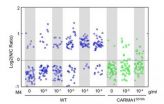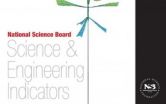(Press-News.org) Chronically homeless, alcohol-dependent individuals might benefit from a new intervention that does not require them to stop or even reduce drinking, according to the results of a preliminary study in Seattle.
Participants in the 12-week pilot program received monthly injections of an anti-craving medication, extended-release naltrexone. They also met regularly with study physicians to set their own goals for treatment and to learn to be safer in their use of alcohol.
"Abstinence-based alcohol treatment has not been effective for or desirable to many homeless people with alcohol dependence ," said Susan Collins of the University of Washington Department of Psychiatry and Behavioral Sciences. She is the lead researcher on a recently published report in the journal Substance Abuse.
The expectation that clients must change their drinking habits has been a barrier to engagement in alcohol treatment. The paper reviews the methods and findings on a new strategy for homeless clients who are not yet ready or able to stop or cutback on drinking.
People who have no permanent place to live and who are also alcohol-dependent often have several health, social, economic, legal and other problems. The study authors noted that homeless people also frequently use costly, publicly funded services, like the jail or emergency medical services.
Collins explained that her team wanted to test a new treatment to see if it would be feasible to offer, acceptable to people with this background, and capable of measurably improving their lives.
The medication chosen for this study, unlike some anti-abuse drugs, does not cause a negative reaction if alcohol is ingested, nor do clients undergo behavioral therapies that make the smell or taste of alcohol aversive. Instead, Collins said, naltrexone figuratively "acts as a pacifier to quiet brain receptors that are crying out for more alcohol." The medication safely reduces craving in active drinkers.
The counseling approach had a non-judgmental, empathetic style. Unlike traditional treatment, in which participants are expected to embrace goals of sobriety or temperance, participants were completely in control of their own treatment goal-setting.
They were not specifically asked if they wanted to reduce their alcohol use, but were asked instead, "What would you like to see happen for yourself?" Many participants spontaneously mentioned that they did not want to drink so much. Among the participants' other treatment goals were reconnecting with their families, finding work or volunteer positions, ameliorating their health problems, and improving personal hygiene.
The counselors also went over safer drinking strategies from which participants could freely choose. These tips reduce the negative effects of alcohol consumption. One strategy is to buffer the effects of alcohol on the body (for example, by drinking nonalcoholic beverages while consuming alcohol to stay hydrated, eating before and during alcohol consumption to slow absorption into the bloodstream, taking B-complex vitamins to lessen cognitive problems). Another strategy is to change the way one drinks (such as avoiding drinking nonbeverage alcohol like hand sanitizer, drinking in a safe place to reduce the odds of being a crime victim, not mixing drinks and drugs). A third strategy is choosing not to drink during some parts of the day or to slowly taper to reduce or stop.
Study physicians also reminded participants of the warning signs of alcohol withdrawal, which can progress to delirium tremens or "D.T.s", a severe, potentially lethal form of alcohol withdrawal.
"Suddenly stopping drinking can be a serious hazard for people with severe alcohol dependence. Often their bodies literally depend on alcohol to survive," Collins said. Among people who are physically dependent, complete alcohol withdrawal should take place in a clinic or hospital setting where the patient can receive medical support. Even when alcohol withdrawal is achieved under the direct care of health professionals, many homeless clients start drinking again when they return to the streets. A cycle of going on and off the wagon can produce what Collins said is a "kindling effect" that makes the symptoms of each subsequent withdrawal more intense.
To test what they hope is a better way to help alcohol dependent homeless clients, the researchers approached 45 clients at two community agencies in the Pacific Northwest; 43 said they were interested. A first injection of naltrexone was received by 31 of them, and 24 participated in all study procedures. The participants said that they found the treatment acceptable. The outcomes of the treatment reported or measured among the participants included decreases in alcohol craving (33%), drops in amount of alcohol consumed on typical and peak drinking days (25% and 34%, respectively), decrease in frequency of alcohol use (17%) and decrease in problems associated with alcohol use (60%). Participants' use of alcohol during the 12-week program was also assessed through regular blood and urine testing, which confirmed participants' self-reports.
The study participants were a median age of 50 years and were mostly men. American Indian/Alaska Native/First Nation participants made up 35.5% of the study group and Caucasians, 38.7%, and another 12.9% identified themselves as multi-racial. The percentage of African Americans was 9.7%, and of Hawaiian Natives/Pacific Islanders, 3.2%. There were no Asian participants in the study.
Researchers were careful to say that the results of the program may reflect the specific culture and demographics of the homeless population in Seattle. Conclusions can't yet be fully drawn for homeless populations in other parts of the country. The researchers plan to test this therapeutic approach in locations outside of the Seattle area.
Overall, the team concluded, "We think the initial results suggest that extended-release naltrexone and harm reduction counseling is a promising means of supporting reductions in alcohol use and in reducing alcohol-related harm among chronically homeless, alcohol-dependent individuals."
"At the same time," they cautioned, "the findings should not be over-interpreted. This was a small, single-arm, open-label study. Larger-scale, well controlled studies are needed to test treatment efficacy."
The team is now conducting a randomized controlled trial sponsored by the National Institute on Alcohol Abuse and Alcoholism to confirm these preliminary findings.
INFORMATION:
In addition to Collins, other researchers on this initial study were Mark H. Duncan, Brian F. Smart and Richard K. Ries, all of the UW Department of Psychiatry and Behavioral Sciences, who also practice at Harborview Medical Center; Andrew J. Saxon of the Veterans Affairs Puget Sound Health Care System; Daniel K. Malone of the Downtown Emergency Service Center; and T. Ron Jackson of the University of Washington School of Social Work and Evergreen Treatment Services.
The research was supported by grants from the UW Alcohol and Drug Abuse Institute, the UW Center for Healthcare Improvement for Addictions, Mental Illness and Medically Vulnerable Populations, and a Career Transition Award to Collins from the National Institute on Alcohol Abuse and Alcoholism.
Anti-craving drug and counseling lower alcohol harm in homeless, without sobriety demands
Participants in a preliminary study received naltrexone injections and set their own treatment goals
2014-05-15
ELSE PRESS RELEASES FROM THIS DATE:
UTHealth research: Children of parents in technical jobs at higher risk for autism
2014-05-15
HOUSTON – (May 15, 2014) – Children of fathers who are in technical occupations are more likely to have an autism spectrum disorder, according to researchers at The University of Texas Health Science Center at Houston (UTHealth).
The findings will be presented Friday at the International Meeting for Autism Research in Atlanta.
During participation in the LoneStar LEND program, first author Aisha S. Dickerson, Ph.D., a researcher at UTHealth's Center for Clinical and Translational Sciences, used the United States government's Standard Occupational Classification system. ...
B cells produce antibodies 'when danger calls, but not when it whispers'
2014-05-15
The immune system's B cells protect us from disease by producing antibodies, or "smart bullets," that specifically target invaders such as pathogens and viruses while leaving harmless molecules alone. But how do B cells determine whether a threat is real and whether to start producing these weapons?
An international team of life scientists shows in the May 16 issue of the journal Science how and why these cells respond only to true threats.
"It is critical for B cells to respond either fully or not at all. Anything in between causes disease," said the study's senior ...
Researchers show emissions from forests influence very first stage of cloud formation
2014-05-15
PITTSBURGH—Clouds play a critical role in Earth's climate. Clouds also are the largest source of uncertainty in present climate models, according to the latest report of the Intergovernmental Panel on Climate Change. Much of the uncertainty surrounding clouds' effect on climate stems from the complexity of cloud formation.
New research from scientists at the CLOUD (Cosmics Leaving OUtdoor Droplets) experiment at CERN, including Carnegie Mellon University's Neil Donahue, sheds light on new-particle formation — the very first step of cloud formation and a critical component ...
New data show how states are doing in science
2014-05-15
The newly updated, online, interactive state data tool allows policymakers, educators and other users to discern trends in education, science and research in each of the 50 states. This free resource supplements the state data in the 2014 Science and Engineering Indicators report, the premier source of information and analysis of the nation's position in science and engineering education and research. The biennial report is published by the National Science Board, the policy making body of the National Science Foundation (NSF).
The tool features 59 state indicators of ...
UH Case Medical Center neurosurgeon uses depth electrodes for speech mapping
2014-05-15
CLEVELAND -- At the 2014 American Association of Neurological Surgeons Annual Meeting, neurosurgical researchers from University Hospitals (UH) Case Medical Center presented results from a small study looking at deep brain electrode implantation as a possible alternative to the traditional WADA test used prior to epilepsy surgery.
The WADA test is considered the gold standard for identifying the side of the brain for speech dominance. In the WADA test, doctors put one half of a patient's brain to sleep for a few minutes using medication and then have the patient read ...
Study: Targeted funding can help address inequities in early child care programs
2014-05-15
CORVALLIS, Ore. – The quality of early child care and education programs is influenced both by funding and by the characteristics of the communities in which the programs operate, new research from Oregon State University shows.
The findings indicate that law- and policy-makers may need to consider the demographics of communities when making funding decisions about early childhood programs, said Bridget Hatfield, an assistant professor in OSU's College of Public Health and Human Sciences.
That's especially important now because many states, including Oregon, are adopting ...
Fires in San Diego County blazing
2014-05-15
The single fire that ignited and split into nine separate fires still blazes in Southern California today. Firefighters are hoping for a break today (Thursday, May 15, 2014) but it doesn't look like luck may be on their side. Conditions continue to be bone dry with unseasonal heat (98-106 degrees) and the Santa Ana winds are kicking up and allowing these fires to easy jump fire lines. This particular fire started on Wednesday as a single fire and within a day is now nine separate fires which have burned close to 10,000 acres. These fires are threatening more than just ...
Giant telescope tackles orbit and size of exoplanet
2014-05-15
Using one of the world's largest telescopes, a Lawrence Livermore team and international collaborators have tracked the orbit of a planet at least four times the size of Jupiter.
The scientists were able to identify the orbit of the exoplanet, Beta Pictoris b, which sits 63 light years from our solar system, by using the Gemini Planet Imager's (GPI) next-generation, high-contrast adaptive optics (AO) system. This approach is sometimes referred to as extreme AO.
The Gemini Planet Imager snapped an amazingly clear and bright image of the gas giant Beta Pictoris b after ...
Detailed studies reveal how key cancer-fighting protein is held in check
2014-05-15
St. Jude Children's Research Hospital scientists have mapped the structural details of how p53 attaches to its regulatory protein, called BCL-xL, in the cell. The protein p53 is a key activator of the cell's protective machinery against genetic damage, such as the mutations that drive cancer cells' explosive growth.
The detailed understanding of how these two molecular puzzle pieces fit together will help scientists design drugs that release p53 in cancer cells, triggering their suicide, called apoptosis.
The findings appear in the current online journal Nature Structural ...
Researchers examine intersection of aging, chronic disease
2014-05-15
A new collection of articles appearing in The Journals of Gerontology, Series A: Biological Sciences and Medical Sciences examine how the basic biology of aging drives chronic disease. Together, they highlight the value of the emerging field of geroscience, which uses an integrated approach to the study of diseases and disability associated with growing older.
Geroscience seeks to bridge the divide between studies of aging and studies of chronic disease, with the hope of understanding their complex relationship and pointing the way to novel interventions for disease, ...
LAST 30 PRESS RELEASES:
Interaction of climate change and human activity and its impact on plant diversity in Qinghai-Tibet plateau
From addressing uncertainty to national strategy: an interpretation of Professor Lim Siong Guan’s views
Clinical trials on AI language model use in digestive healthcare
Scientists improve robotic visual–inertial trajectory localization accuracy using cross-modal interaction and selection techniques
Correlation between cancer cachexia and immune-related adverse events in HCC
Human adipose tissue: a new source for functional organoids
Metro lines double as freight highways during off-peak hours, Beijing study shows
Biomedical functions and applications of nanomaterials in tumor diagnosis and treatment: perspectives from ophthalmic oncology
3D imaging unveils how passivation improves perovskite solar cell performance
Enriching framework Al sites in 8-membered rings of Cu-SSZ-39 zeolite to enhance low-temperature ammonia selective catalytic reduction performance
AI-powered RNA drug development: a new frontier in therapeutics
Decoupling the HOR enhancement on PtRu: Dynamically matching interfacial water to reaction coordinates
Sulfur isn’t poisonous when it synergistically acts with phosphine in olefins hydroformylation
URI researchers uncover molecular mechanisms behind speciation in corals
Chitin based carbon aerogel offers a cleaner way to store thermal energy
Tracing hidden sources of nitrate pollution in rapidly changing rural urban landscapes
Viruses on plastic pollution may quietly accelerate the spread of antibiotic resistance
Three UH Rainbow Babies & Children’s faculty elected to prestigious American Pediatric Society
Tunnel resilience models unveiled to aid post-earthquake recovery
Satellite communication systems: the future of 5G/6G connectivity
Space computing power networks: a new frontier for satellite technologies
Experiments advance potential of protein that makes hydrogen sulfide as a therapeutic target for Alzheimer’s disease
Examining private equity’s role in fertility care
Current Molecular Pharmacology achieves a landmark: real-time CiteScore advances to 7.2
Skeletal muscle epigenetic clocks developed using postmortem tissue from an Asian population
Estimating unemployment rates with social media data
Climate policies can backfire by eroding “green” values, study finds
Too much screen time too soon? A*STAR study links infant screen exposure to brain changes and teen anxiety
Global psychiatry mourns Professor Dan Stein, visionary who transformed mental health science across Africa and beyond
KIST develops eco-friendly palladium recovery technology to safeguard resource security
[Press-News.org] Anti-craving drug and counseling lower alcohol harm in homeless, without sobriety demandsParticipants in a preliminary study received naltrexone injections and set their own treatment goals





